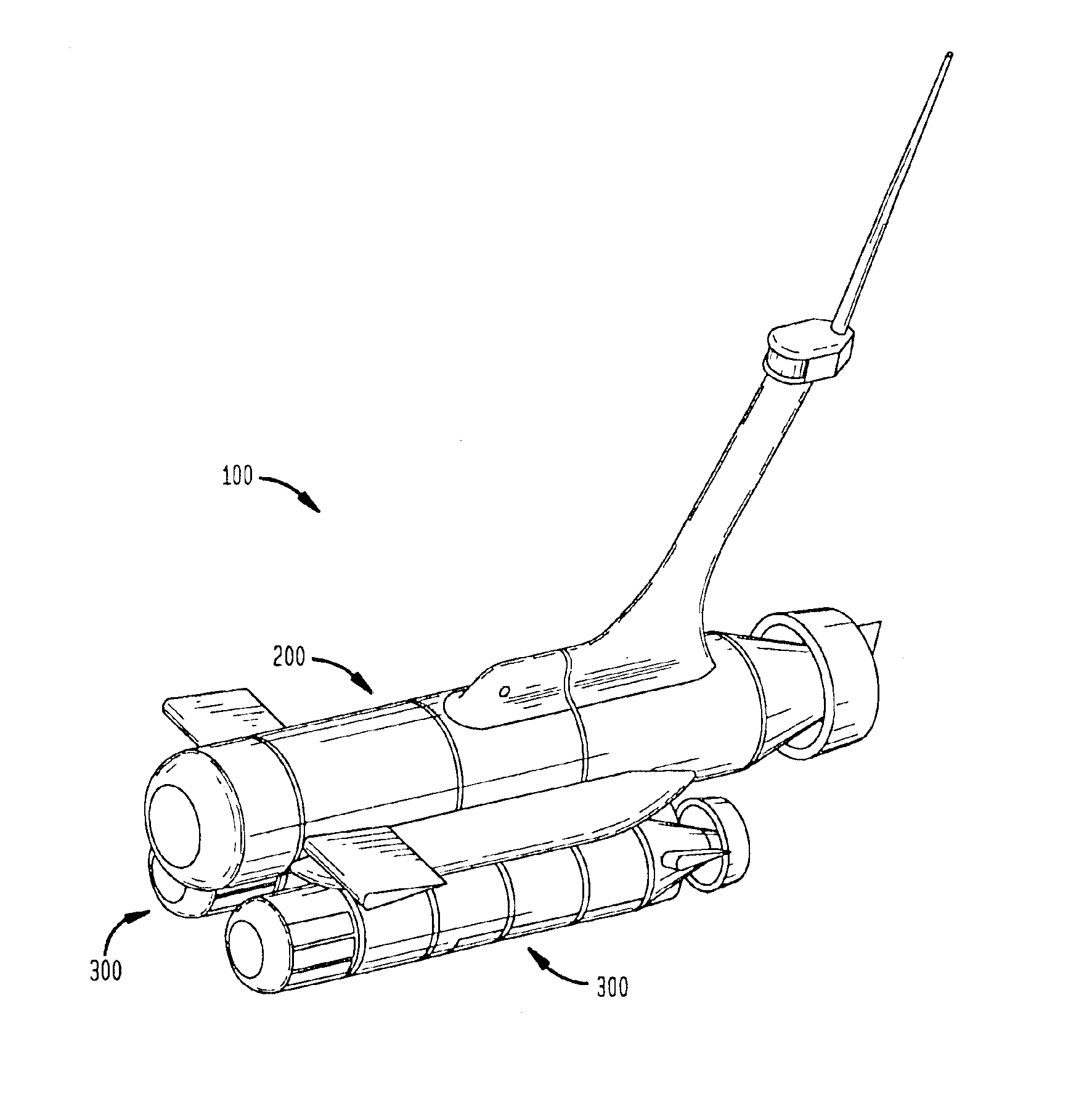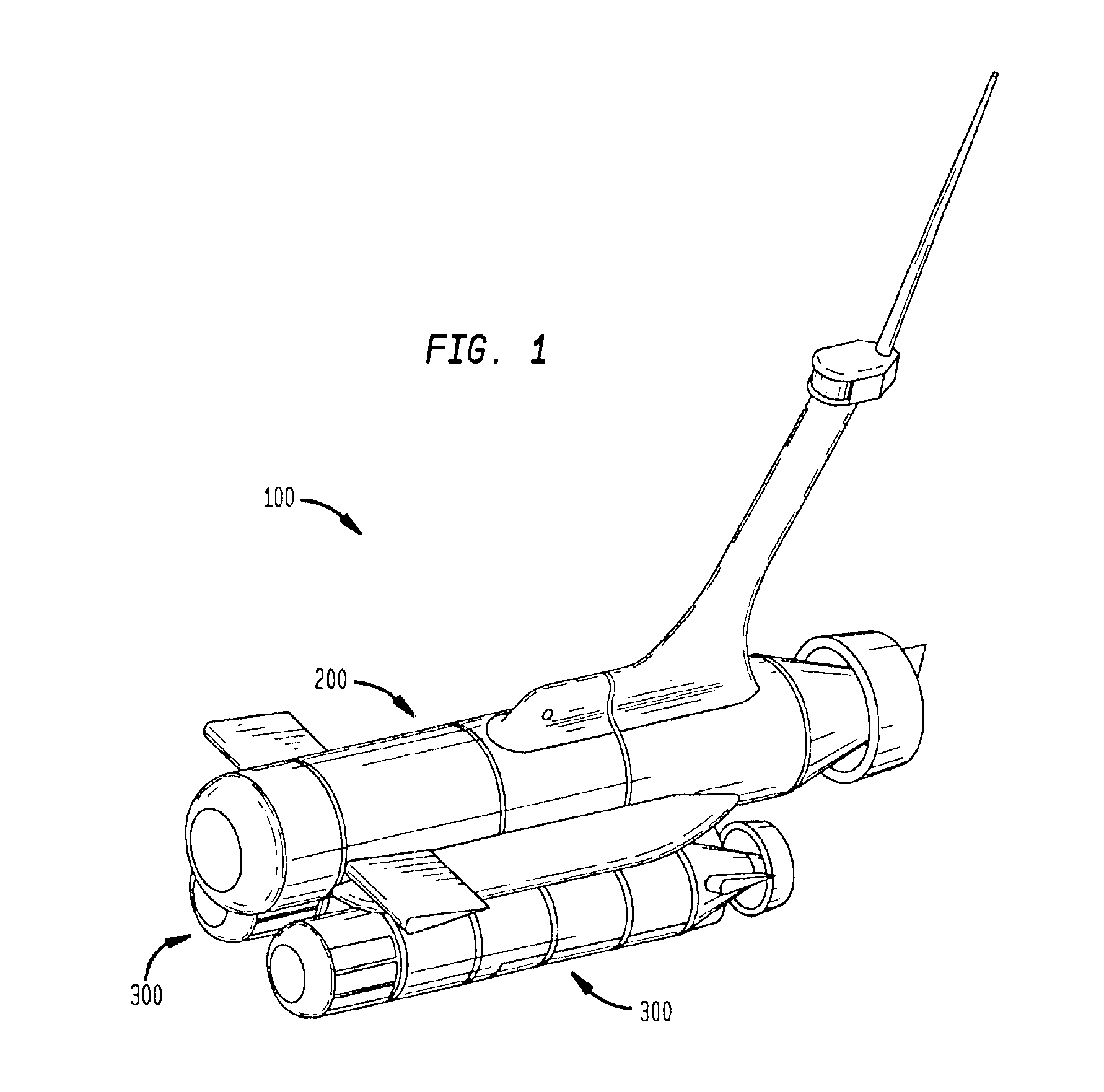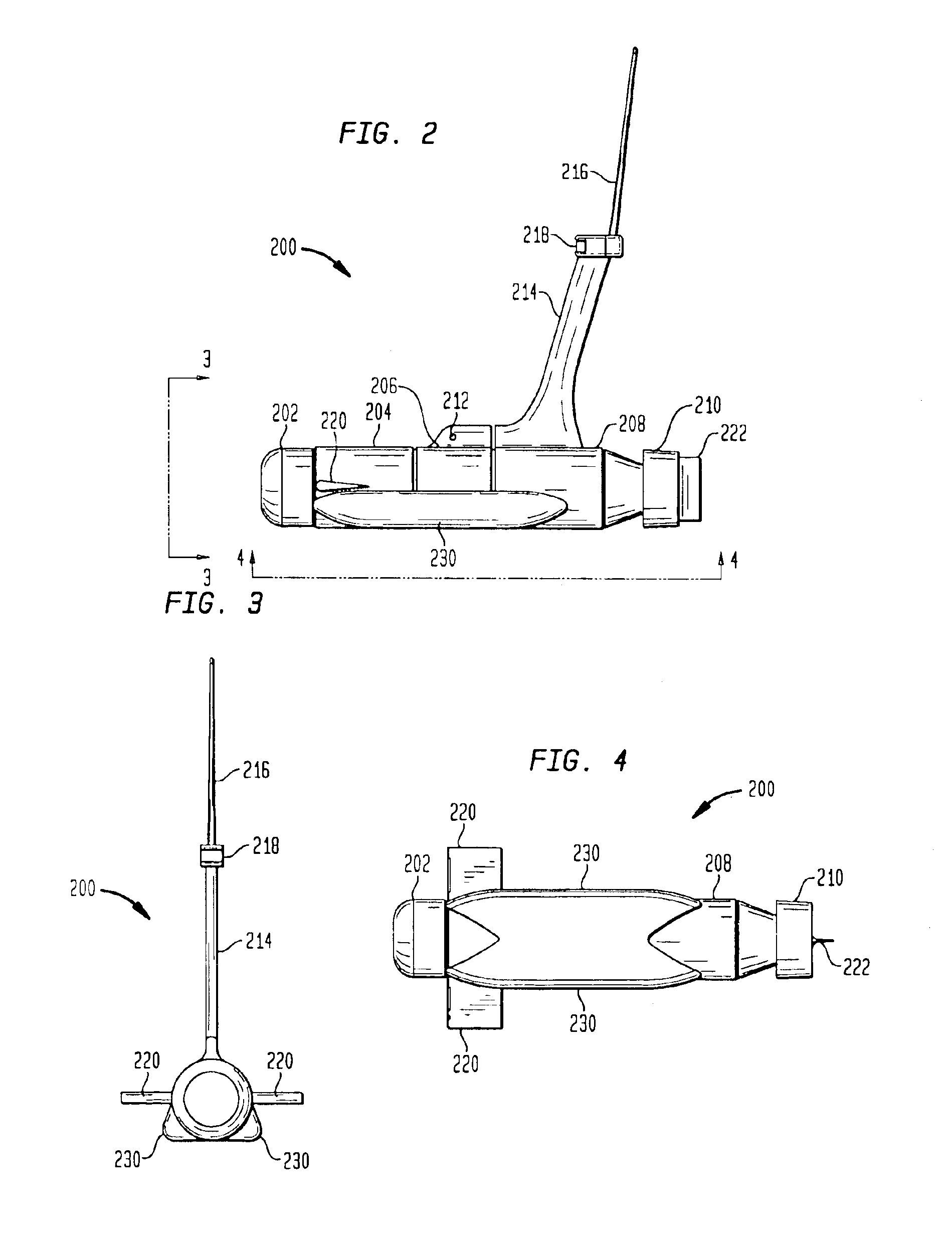Underwater investigation system using multiple unmanned vehicles
a technology of underwater investigation and unmanned vehicles, which is applied in underwater equipment, special-purpose vessels, vessel construction, etc., can solve the problems of mine hunting exercise itself not being made in a timely manner, dmhs is an expensive piece of equipment and expensive to run, and the method of mine hunting is the least attractive, so as to facilitate the recovery of uuvs from the water
- Summary
- Abstract
- Description
- Claims
- Application Information
AI Technical Summary
Benefits of technology
Problems solved by technology
Method used
Image
Examples
Embodiment Construction
Referring now to the drawings, and more particularly to FIG. 1, an underwater investigation system using multiple unmanned vehicles is shown and is referenced generally by numeral 100. By way of illustrative example, underwater investigation system 100 will be described for its use in mine hunting operations. However, as will be understood by one of ordinary skill in the art, system 100 can also be used in a variety of other underwater operations to include, for example, coastal sentry operations, search and rescue operations, undersea survey and / or mapping operations, maritime accident or shipwreck investigations, and marine life studies. Accordingly, it is to be understood that all references to mine hunting operations are not to be considered limitations of the present invention.
Underwater investigation system 100 includes an unmanned mothership 200 that can transport two or more (e.g., two are shown) unmanned investigative vehicles 300 underwater to and from an underwater region...
PUM
 Login to View More
Login to View More Abstract
Description
Claims
Application Information
 Login to View More
Login to View More - R&D
- Intellectual Property
- Life Sciences
- Materials
- Tech Scout
- Unparalleled Data Quality
- Higher Quality Content
- 60% Fewer Hallucinations
Browse by: Latest US Patents, China's latest patents, Technical Efficacy Thesaurus, Application Domain, Technology Topic, Popular Technical Reports.
© 2025 PatSnap. All rights reserved.Legal|Privacy policy|Modern Slavery Act Transparency Statement|Sitemap|About US| Contact US: help@patsnap.com



